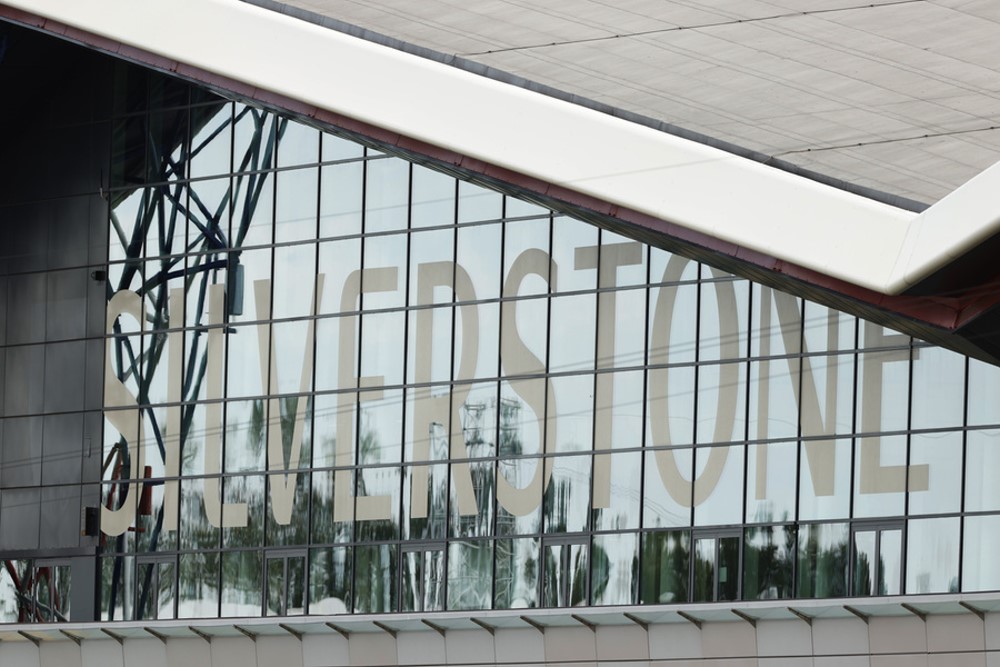Formula 1 News: 2025 British Grand Prix at Silverstone Preview
Round 12 of the 2025 FIA Formula 1 World Championship brings the 10 F1 Teams to Silverstone, home of the British Grand Prix.
–by Mark Cipolloni–
Silverstone was back where it all began for the Formula 1 World Championship on May 13, 1950, on the perimeter layout of the runway strips used by the Royal Air Force in World War II. Britain has been a mainstay on Formula 1’s calendar since the championship’s inaugural race and Silverstone has been the host venue each year since 1987, following spells at Brooklands, Aintree and Brands Hatch.
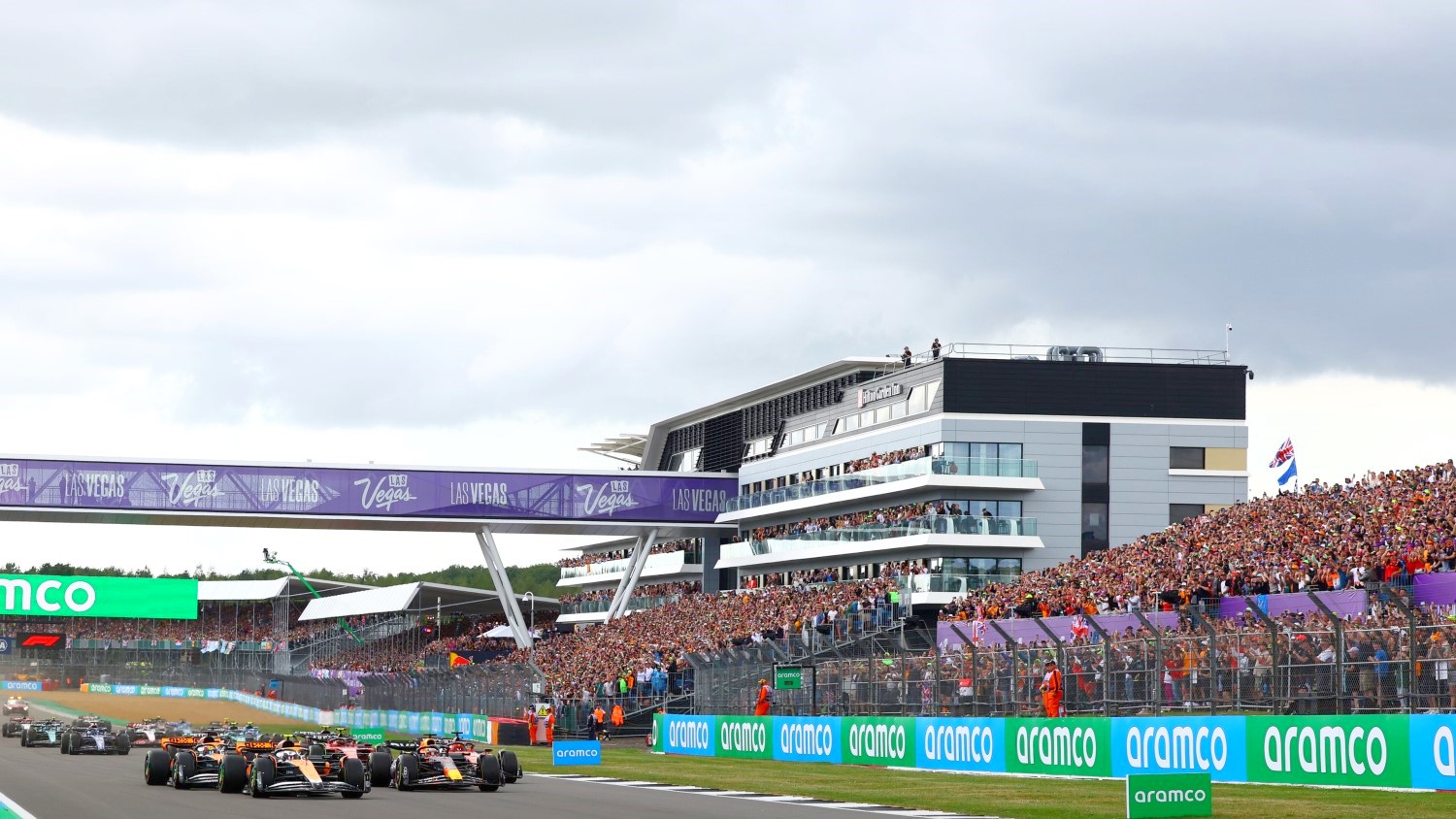
Silverstone is the birthplace of Formula 1 with the very first race to count towards the Drivers’ championship taking place on 13 May 1950, in front of a crowd of over 100,000 spectators. In an Alfa Romeo 158 fitted with Pirelli tires, Nino Farina took pole position, the fastest race lap and the very first win in the history of Formula 1.
The Italian also became the first World Champion, clinching the title at the final round later that year in Monza.
From Silverstone to Monza, there’s also a link between the two venues this year: while Formula 1 celebrates its diamond jubilee in England, at Monza’s Italian GP weekend, there will be a special ceremony celebrating Pirelli’s 500th Grand Prix.
Actually, that particularly milestone will have been reached the previous weekend at the Dutch Grand Prix at Zandvoort, but it is only fitting that it should be marked at a venue that is a mere 15 kilometers distance from Pirelli’s headquarters in Milan.
Silverstone is renowned as a fast and flowing circuit, which tests the aerodynamic prowess of Formula 1 cars, and puts a high-energy load through Pirelli’s tires. High-speed sequences such as Copse, Maggotts and Becketts, and Stowe have been tackled by the greats throughout Formula 1 history and now the class of 2023 are ready to sweep around Silverstone’s iconic tarmac.
As well as the location for Formula 1’s first championship round, Britain is the home for the majority of Formula 1 teams. Eight of the 10 participating entrants have either their headquarters or satellite operations in Britain, with many in close proximity to Silverstone. That means a large portion of the paddock has the unusual experience of commuting to work from home during the British Grand Prix weekend.
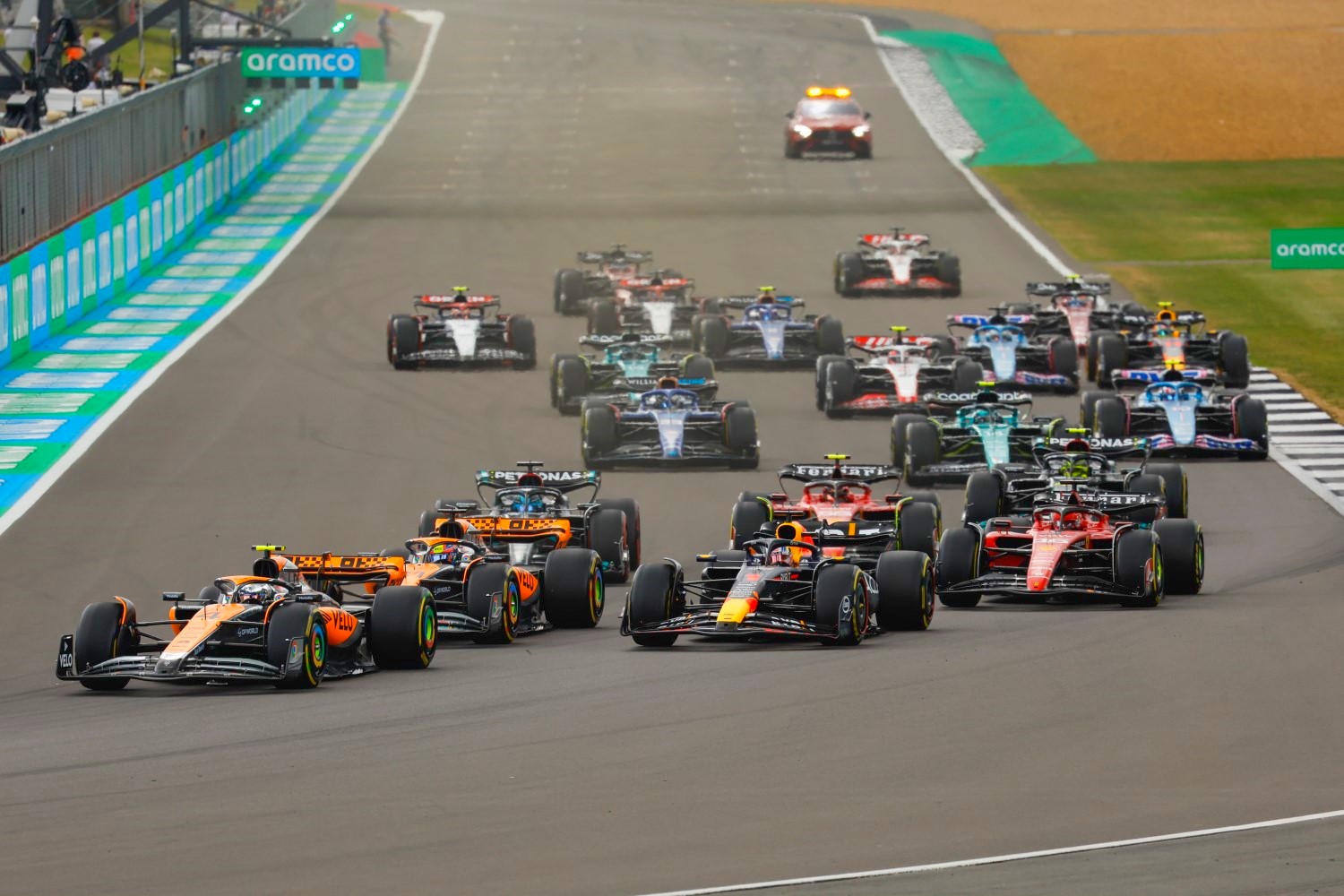
Race Insight
- Race interruptions: The Safety Car has been deployed in all but one Grand Prix held at Silverstone during the hybrid era. In that period, there have also been three red flags. However, Virtual Safety Car deployments are rare; there has been just one deployment at Silverstone.
- Overtaking: The overtaking difficulty is close to average. There have been 25 passes per race over the last five races – ignoring starts and restarts – and most of the passing takes place in the DRS zones, while Turns Three, Seven and 16 also offer opportunities.Strategy: The hardest tires in the Pirelli range have been allocated this weekend. Generally, tire degradation is low – despite high loads on the tires through the fast corners. This often means the race is a one-stop event with a focus on keeping track position.
Unlocking the Lap
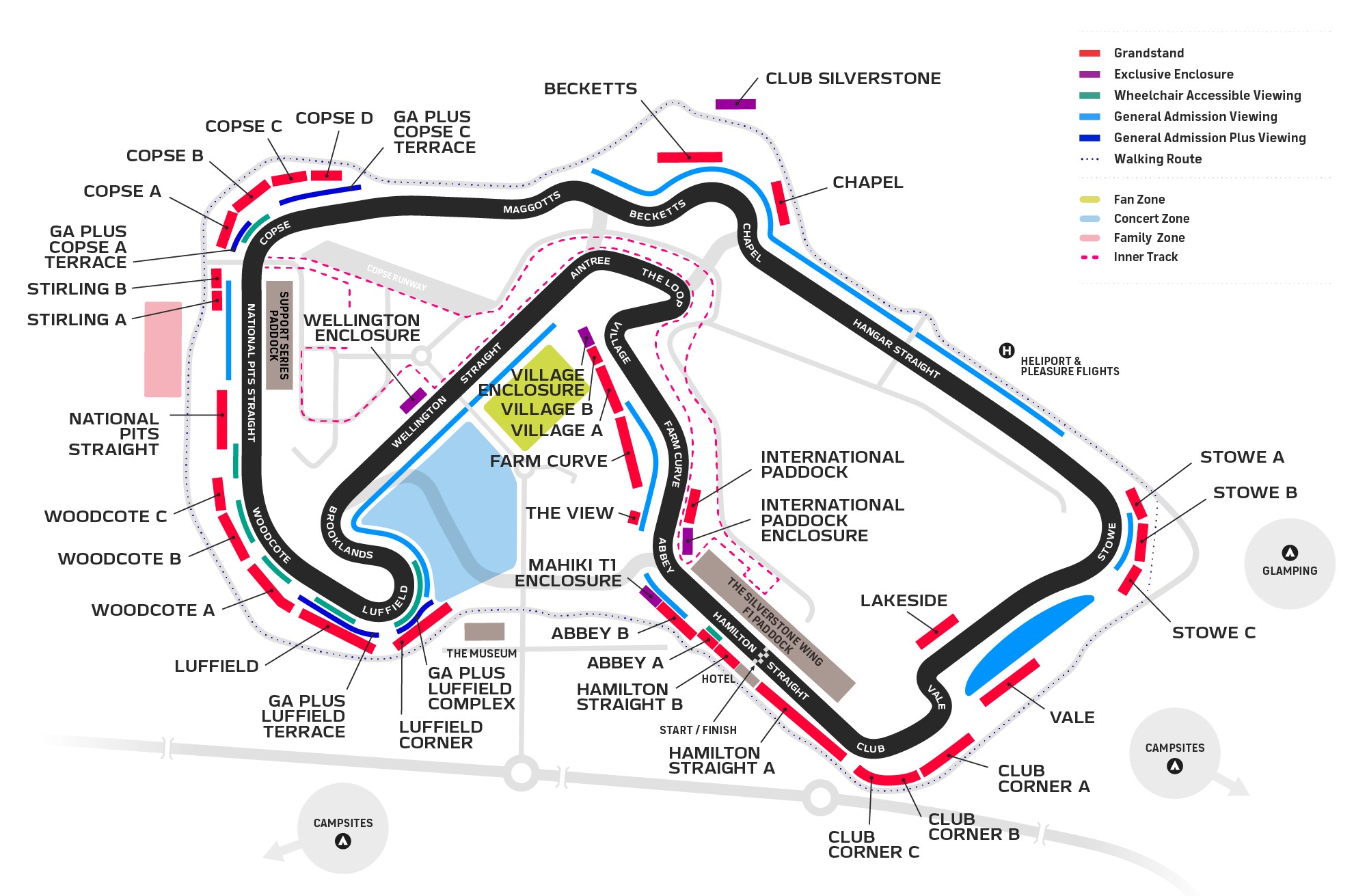
- A short run to begin the lap and then it’s flat-out through the opening corner, Abbey, and the following Farm corner. Turn Three is a hard braking right-hander and Turn Four is a tight left-hander. Getting the exit right is crucial for a rapid run down the following straight. Brooklands is a medium-speed left-hander that leads directly into Luffield, where the car threatens to run wide on the exit. Again, it’s important to get a good run to blaze down Woodcote.
- After the straight comes Copse, Turn Nine, which is a high-speed right-hander. This leads to the famous and blisteringly fast Maggots, Becketts, Copse and Chapel sequence: left, right, left, and a tighter right-hand bend complete the sequence that leads onto Chapel corner and the following Hangar Straight.
- Finally, drivers shift down a couple of gears through the Stowe right-hander, hurtle down towards the final chicane and avoid losing traction on the exit to retain some momentum through the final Club Corner and down the start-finish straight.
Lando Norris Lap Guide
Abbey and Farm Curve
The first corner at Abbey is flat out. The driver has to throw the front of the car into the corner, and then hang on to it on the exit, because we immediately go into turn two – the Farm Curve. There is also a bit of a bump in there, so if we are too aggressive the car will destabilize.
Village and The Loop
Next, is the slow-speed section of the track, putting the brakes on as we enter Village, which provides an overtaking opportunity, albeit not an easy one by any stretch of the imagination. It is very easy to lock the front-right tire under braking which compromises our line into the left-hander, The Loop, but the exit is key because the kink at Aintree takes us on to the long Wellington Straight, and the first of two DRS zones.
Brooklands
We then head into the old part of the circuit, driving at nearly 220mph, before we approach the long, left-hander at Brooklands. Here we brake and shift down the gears. There is a chance for overtaking around the outside.
Luffield and Woodcote
Luffield, the ensuing right-hander, is endless and is the most frustrating corner on the track. We turn in and want to jump on the throttle immediately, but we have to be patient, we have to wait as we battle with understeer. There are two lines you can take; go deep and focus on a good exit, or slow down earlier and carry a tight line. If we do the latter, we will be faster through the bend, but our exit will be compromised.
Pit Straight and Copse Corner
Up next, is the old-start finish line and the high-speed right-hander at Copse – where Lewis Hamilton and Max Verstappen collided in 2021. We take the bend at 190mph so if we miss the apex we’ll never make the corner and we will be forced to use the run-off area on the exit.
Maggots, Becketts and Chapel Curve
This has to be the best set of corners in Formula One. The first left at Maggots is a small flick, but at the next right-hander, it is important to carry speed to the point that you use three-quarters of the track. If you use all of the asphalt, it is difficult to get back online for the next left at Becketts. If you are a little bit wide on the first part, it just multiplies the problem through the remaining series of corners.
Hangar Straight and Stowe
We exit Chapel Curve and head on to the Hangar Straight and the second DRS zone before we arrive at Stowe. Although Stowe provides an overtaking opportunity, it is not a good one because it is so fast. It’s vital to hit the apex at Stowe. If you don’t, the front of the car washes out, and you end up on the astroturf on the exit.
Vale and Club Corner
Club Corner is vital to be taken at 100% throttle because it leads onto the pit straight
Weather Forecast – Maybe Rain
Friday – FP1 and FP2 Forecast:
Cloudy skies throughout the day.
Temperature: 25°C / 78°F
Chance of precipitation: Less than 5%
Saturday – FP3 and Qualifying Forecast:
Overcast conditions with a threat of rain.
Temperature: 22°C / 72°F
Chance of precipitation: Less than 30%
Sunday – Race Forecast:
Showers are expected during the main race.
Highest temperature: 20°C / 68°F
Chance of precipitation: 50%
Fact File: British Grand Prix
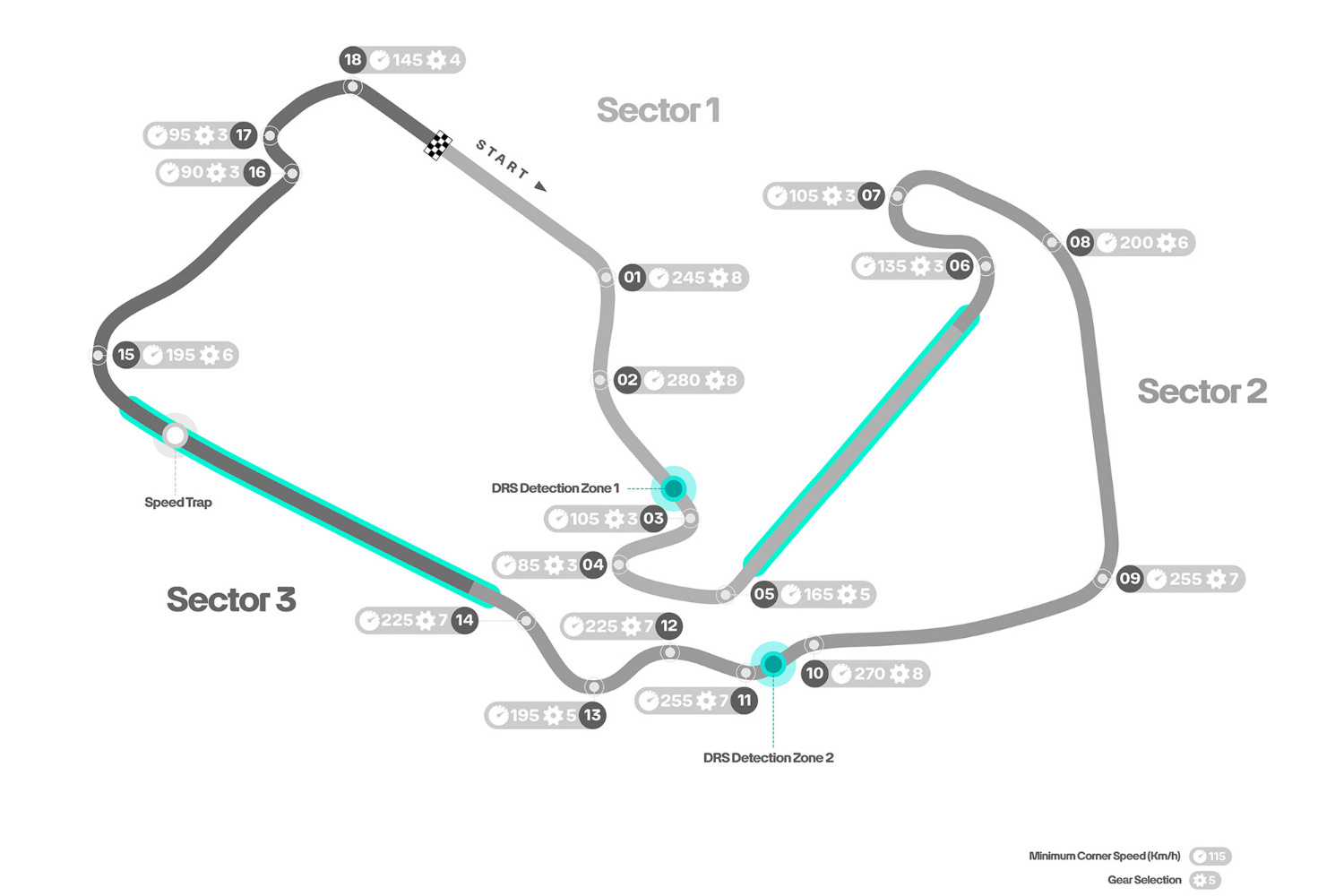
- At 5.891km, Silverstone is the fifth-longest circuit on the 2024 calendar. It was previously the fourth-longest, but the introduction of Las Vegas (6.120km) has demoted it down a place.
- Maggotts, Becketts, Chapel – Silverstone boasts some of the most iconic names for corners in the whole of motorsport, and it is one of only three tracks in F1 where engineers give names to the corners and not numbers, the other two being Spa-Francorchamps and Monaco.
- Drivers complete almost 80% of a lap at full throttle at Silverstone, the third-highest percentage seen so far this season after Australia and Saudi Arabia
- Silverstone’s legendary layout is tough on tires, especially the left-front which has huge loads imposed on it through Turns 1, 8, 9, 10, 11, 12 and 15.
- Given its high-speed nature with fast, flowing corners, brakes are not put under a great strain at Silverstone. Teams therefore can focus on other areas such as fine-tuning aerodynamic set-up rather than on brake cooling.
- As an open, exposed, former airfield, the circuit is notoriously windy and changes in wind direction happen frequently. That can have a major impact on vehicle balance and change the car’s behavior. This forces drivers to adjust accordingly in terms of braking points, entry speeds as they approach the apex of turns, and acceleration as they exit.
- From the start, drivers will complete two corners before hitting the brakes for the first time at Village (Turn 3). The distance from pole position to this point is 650 meters but, on full fuel tanks at the beginning of the Grand Prix, they do have to lift off the throttle after 225 meters.
- The only race where we see a longer distance from pole position to first braking zone is at the Autodromo Hermanos Rodriguez in Mexico. The vast start/finish straight there sees drivers hit the brakes for the first time 811 meters from pole position.
- Silverstone also has the second longest pit lane length of the season at 509 meters – the pit lane entry begins after Turn 15, with the pit exit feeding in at Turn 2.
- This means that whilst time in the pit lane clocks in at 23 seconds, the third highest of the season, time loss is limited with drivers not having to negotiate Turns 16, 17, 18, and 1.
- The long straights and flat-out sections around the circuit mean that 78% of the lap is taken at full throttle, the fifth highest total of the season.
- Drivers experience some of the highest lateral g-forces of the season at the British Grand Prix, with an expected maximum of 5g at Turn 11 through the Maggotts-Becketts sequence.
Pirelli Tires
Silverstone has hosted 59 Grands Prix, more World Championship events than any other circuit with the exception of Monza (74). Its layout has remained more or less unchanged throughout the years.
At 5.861 kilometers, it is one of the longest tracks on the calendar, with 18 corners, (10 to the right and 8 to the left). Some of them, such as the Maggots-Becketts-Chapel complex, involve rapid and high speed changes of direction, which generate very high lateral forces, similar to those at Spa-Francorchamps and Suzuka.
The circuit is in almost year round use with four and two-wheeled racing categories and so it provides good grip right from Friday’s first free practice session, aided by the fact the surface is rated medium-low in terms of abrasiveness.
Despite taking place at the height of summer, the English weather can often be unpredictable with very changeable temperatures and wind and rain suddenly putting in an appearance, turning the tables during the race, as was the case last year.
There is an important change to the compound choices for this event. In fact, Pirelli has gone with the C2 as Hard, the C3 as Medium and the C4 as Soft, which is a step softer than last year.
The aim, shared with the FIA, F1 and the teams, is to create a wider range of strategy options for the race.
In 2024, when the C3 was the Soft, it was used by just a few drivers in the closing stages of the race following the rain.
This year, as the Medium, it is bound to play an important role, probably in several phases of the race. For those aiming for a one-stop race, the stints will have to be managed very carefully, while accepting a longer total race time.
Also a consideration in this equation is the fact that the time taken for a tire change is not very long (around 20,5 seconds) and while challenging, overtaking is possible.
All dry compounds and the Intermediates were used during the 2024 British Grand Prix. 17 drivers opted to line up on the starting grid on the Medium, the only exceptions being Ocon and Zhou who preferred the Soft and Perez, who had to start from pit lane on Hards. The C2 proved effective, allowing the drivers to push even on the full fuel load from the start, as well as allowing them to manage the complicated conditions created when it started to rain. Furthermore, the Medium also provided greater flexibility in terms of when to make the first pit stop, given that the threat of rain was there even before the start.
Next, it was time for the Intermediate to take center stage when the crossover moment arrived. Those, such as Leclerc and Perez, who had chosen to switch early to the green-banded tires, found that they had to come in again for a new set when the really wet conditions set in, as their original set had worn out.
However, the rain was never as intense as it had been the previous day in FP3, which meant they wore more quickly as the track dried out. The final part of the race saw all three dry compounds perform on equal terms.
Among the leaders, it was clear to see that the various car-driver-tire compound packages all worked well: Hamilton won for Mercedes on the Soft, Verstappen had the best pace in the Red Bull on the Hard, while Piastri was very competitive in his McLaren on the Medium.
Tires for Silverstone
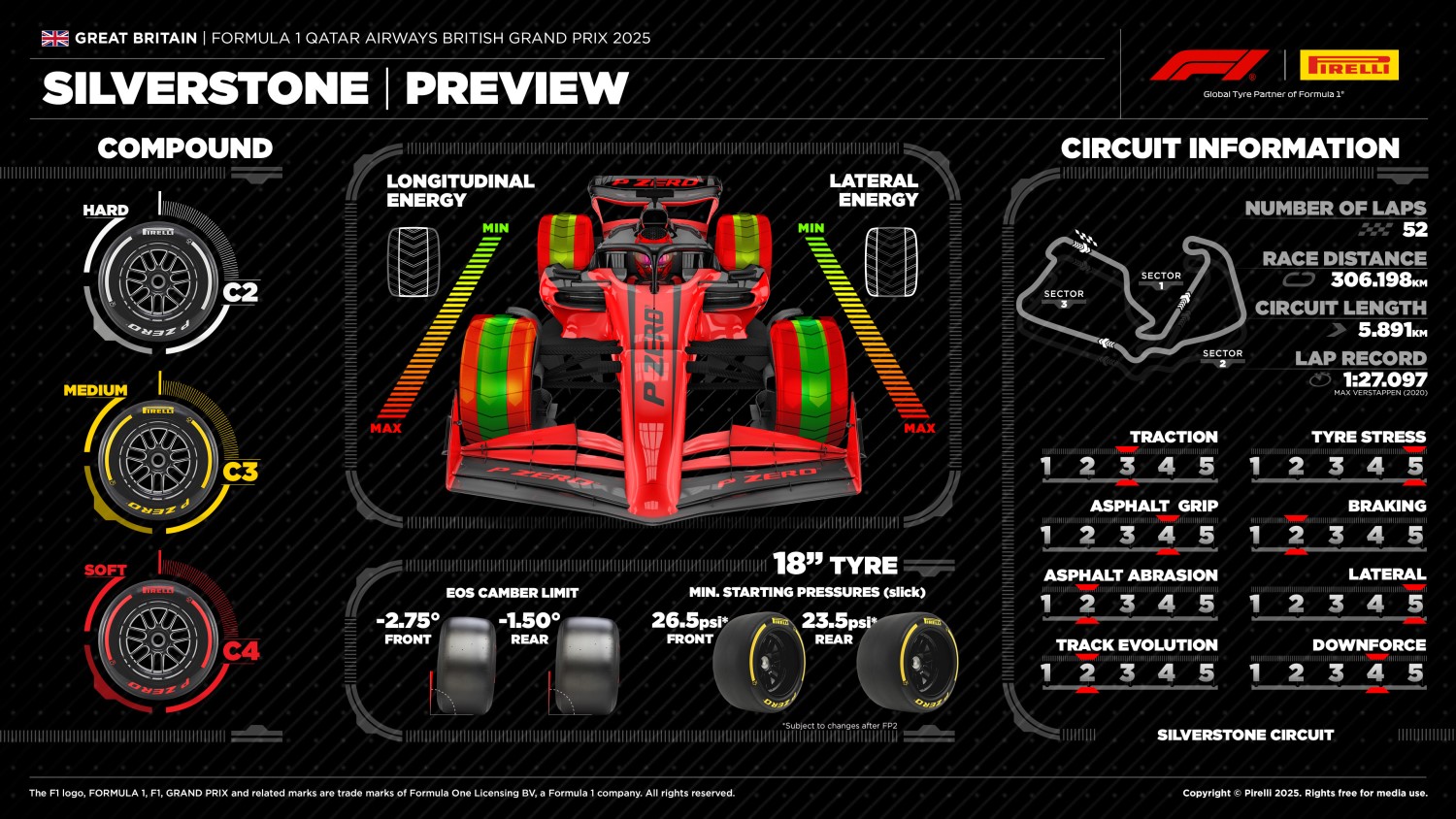
USA TV Schedule
All Times Eastern
| Friday, July 4, 2025 | Location | TV Times | TV |
| Formula 1 British GP Practice 1 | Silverstone | 7:25am – 8:30am (Live) | ESPN U |
| Formula 1 British GP Practice 2 | Silverstone | 10:55am – 12:00pm (Live) | ESPN U |
| Saturday, July 5, 2024 | Location | TV Times | TV |
| Formula 1 British GP Practice 3 | Silverstone | 6:25am – 7:30am (Live) | ESPN2 |
| Formula 1 British GP Qualifying | Silverstone | 9:55am – 11:00am (Live) | ESPN2 |
| Formula 1 British GP Ted’s Qualifying Notebook | Silverstone | 12:00pm – 12:30pm (Live Stream) | ESPN3 |
| Sunday, July 6, 2025 | Location | TV Times | TV |
| Formula 1: GP Sunday | Silverstone | 8:30am – 9:55am (Live) | ESPN2 |
| Formula 1 British GP | Silverstone | 9:55am – 12:00pm (Live) | ESPN2 |
| F1 Kids British GP | Silverstone | 9:55am – 12:00pm (Live) | ESPN U |
| Formula 1 British GP Post-Race | Silverstone | 12:00pm – 1:00pm (Live Stream) | ESPN3 |
| Formula 1 British GP Ted’s Race Notebook | Silverstone | 1:00pm – 1:30pm (Live Stream) | ESPN3 |
| Formula 1 Qatar Airways British GP | Silverstone | 7:00pm – 9:30pm (Replay) | ESPNews |
| Formula 1 Qatar Airways British GP | Silverstone | 9:30pm – 12:00am (Replay) | ESPNews |
